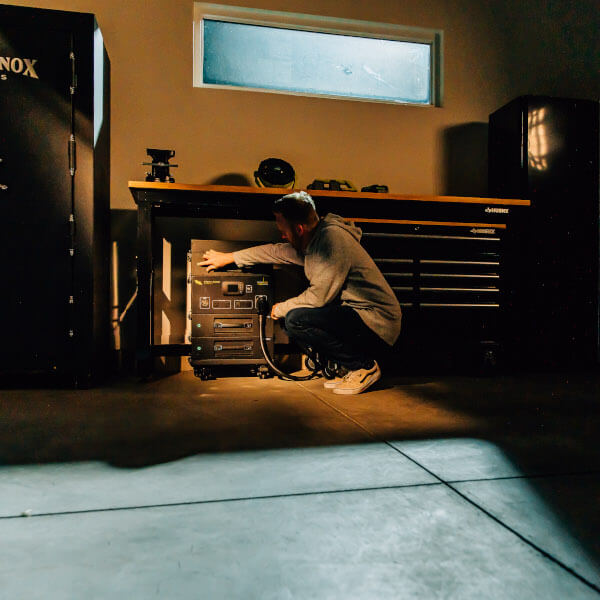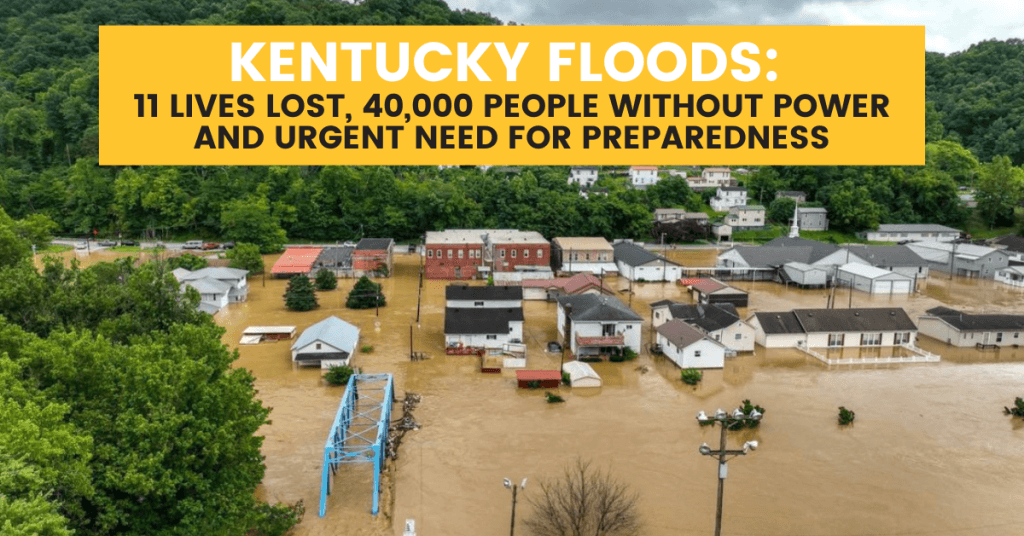
On January 15, 2025, heavy rains hit Kentucky hard, turning many areas into flood zones almost overnight. The flooding took the lives of at least 11 people and knocked out power for around 40,000 residents. In Hazard, the situation was especially tough, with streets turning into rivers and forcing families to evacuate quickly. Emergency crews worked non-stop to rescue more than 1,000 people in danger and to help prevent more losses.
As news of the disaster spread, many stories of community support and personal courage emerged. These stories remind us that natural disasters can happen suddenly, without much warning, and no one is completely prepared. The floods showed that when a disaster strikes, a lack of home preparedness can make things much worse. Now, more than ever, it’s clear how important it is for every household to be ready before trouble comes.
Simple steps like installing a home generator, setting up a home power station or creating an emergency preparedness plan can provide critical power during outages. A dedicated home backup power generator not only keeps essential appliances running but also offers peace of mind when every minute matters. Whether you’re an experienced prepper or just starting to prep for emergencies, taking steps now to safeguard your home and loved ones can make a big difference when disaster strikes.
The floods in Kentucky were triggered by torrential rainfall that overwhelmed natural water systems, causing rivers and streams to burst their banks. This sudden surge of water inundated neighborhoods, swept away vehicles, and left a trail of destruction in its wake. In downtown Hazard, the situation was especially dire. The floodwaters came in so fast and forcefully that local officials had little time to react. Rescue teams were deployed immediately, and within the first 24 hours, they conducted over a thousand rescues, pulling stranded residents to safety amid dangerous, fast-moving water.
According to Louisville Public Media, the heroic efforts of these specialized teams played a crucial role in preventing further loss of life, even as the crisis unfolded. The rapid response by emergency crews was a testament to their training and dedication. However, despite their best efforts, the tragedy claimed 11 lives and left countless others facing the harsh reality of their homes and neighborhoods destroyed.
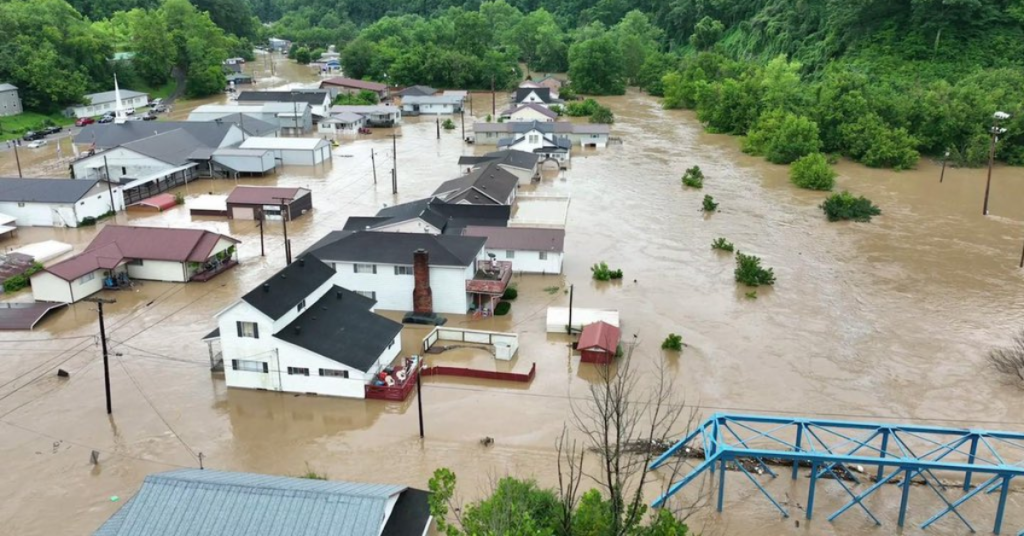
The heavy flooding not only turned streets into rivers but also left the community grappling with extensive power outages that have affected nearly every aspect of daily life. With power down for over 40,000 residents, homes were plunged into darkness, and essential services faced severe disruptions. Local businesses struggled to keep operations running, while families found themselves without reliable means to refrigerate food, stay warm, or even communicate effectively during a critical time.
The outage has also deeply affected water services in Hazard. As reported by local media, the loss of power has crippled water treatment facilities, causing dangerous drinking water conditions. Without electricity, these plants cannot operate normally, forcing authorities to issue boil water advisories and urging residents to conserve their limited supply of safe water. The City of Hazard has actively called on residents to minimize water usage, a move designed to stretch the available supplies while crews work to restore normal service.
Residents are now facing not only the immediate dangers of flooding but also the cascading effects of interrupted utilities. This double blow leaves many feeling vulnerable and underprepared for prolonged periods of disruption.
Together, these challenges underscore the critical importance of robust home preparedness. In the face of such extensive outages, having a reliable home generator or home power station can keep essential systems running—ensuring that you continue to have safe water, proper refrigeration, and the ability to stay informed during emergencies. Now, more than ever, communities must learn from these events and invest in emergency backup power and comprehensive flood preparedness measures to protect themselves and their families when disaster strikes.
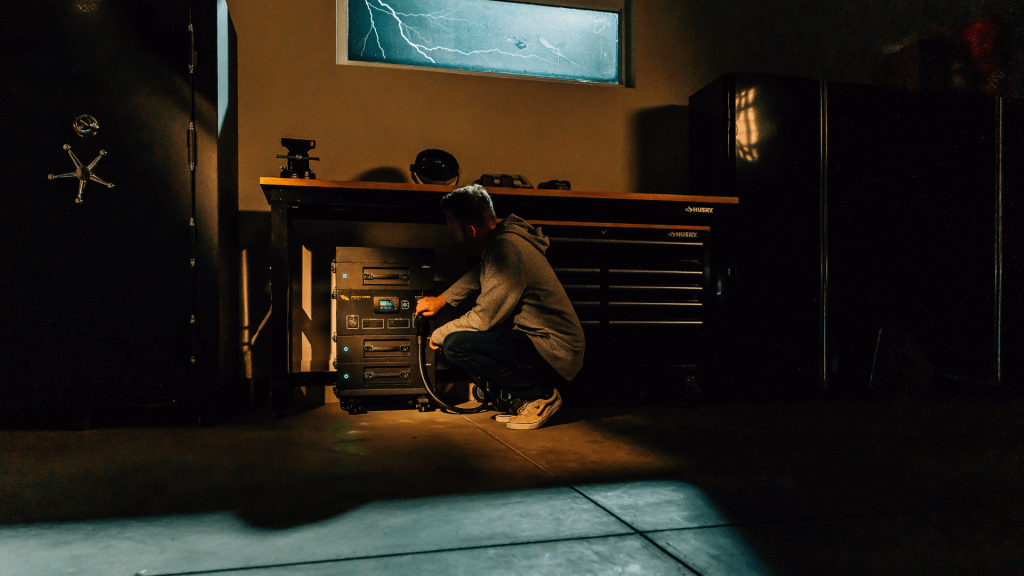
When disaster strikes, having a reliable source of emergency backup power is absolutely essential. Floods, storms, and other extreme weather events can take out your power grid in an instant, leaving you vulnerable in the dark. With a dependable home generator or home power station, you can keep your critical appliances running—even when the utility company can’t help. For homeowners, this isn’t just a luxury; it’s a vital part of emergency and flood preparedness.
Imagine facing an emergency, like a flood, without the means to keep your refrigerator cold, your sump pump operational, your medical equipment running, your heat working or your communication devices charged. In a crisis, these issues can quickly escalate from inconvenience to life-threatening problems. Emergency backup power helps maintain essential services, such as heating, cooling, and water purification, when the regular power supply is disrupted. This makes it an indispensable asset for any prepper aiming to safeguard their home and family during extreme weather events.
An emergency home generator offers the ability to run key appliances, ensuring that you’re not left without the means to prepare and respond during a disaster. Whether it’s keeping your home emergency power on for medical equipment or providing flood backup power to run pumps and water treatment devices, the benefits are clear. Investing in a quality home generator or home power station can be the difference between minor disruption and major catastrophe.
When deciding on the right emergency backup power system for your home, consider the following factors:
Power Needs:
Assess which appliances and systems are absolutely critical during an emergency. Do you need to keep medical devices running? What about refrigeration or water pumps? Knowing your power needs helps determine the generator size or home power station capacity you require.
Installation and Maintenance:
Standby generators require professional installation and periodic maintenance to ensure they’re ready when needed. Portable generators and home power stations, on the other hand, offer flexibility and ease of use but may require more hands-on management during an emergency.
Budget:
While investing in emergency backup power is crucial, it’s important to balance your budget with your needs. Portable generators are typically more budget-friendly, while standby generators, though more costly, provide comprehensive coverage and automation.
Check out this article for more tips of finding the right power generator for you: 10 Tips For Choosing the Right Solar Generator – Point Zero Energy
In a time when unpredictable weather events are becoming more frequent, having emergency backup power isn’t just about convenience—it’s about protecting your family and ensuring your home remains a safe haven. By investing in a reliable home generator or power station, you’re taking a proactive step in your overall flood preparedness strategy. It means you’ll be better equipped to handle power outages, maintain essential services, and reduce the risk of damage from flooding.
For those who consider themselves preppers, having a robust system in place is part of a broader strategy to ensure safety and resilience. For families just starting to build their emergency kit, even a modest home power solution can provide critical support during a disaster. In both cases, the goal is the same: to minimize the disruption caused by power outages and to ensure that you’re never caught off guard when the unexpected happens.
Emergency backup power is more than just a gadget—it’s a critical component of a comprehensive home preparedness plan. With the right system in place, you can protect your loved ones, secure your property, and face the challenges of any disaster with confidence.

Ensuring access to a safe and reliable water supply during disasters is as crucial as securing power. Flooding can easily contaminate local water sources with debris, chemicals, and pathogens, rendering them unsafe to drink. Hazard, Kentucky experienced severe flooding that led to significant water contamination, leaving residents without access to clean, drinkable water. In these situations, emergency water storage and purification solutions become essential lifelines for families.
Floodwaters often carry a mix of pollutants, including bacteria, viruses, and chemicals from various sources like sewage systems, agricultural runoff, and industrial waste. These contaminants can infiltrate private wells and municipal water supplies, posing significant health risks. For instance, exposure to flood-contaminated water has been linked to an increase in acute gastrointestinal illnesses due to pathogens present in the water.
To prepare for such emergencies, it’s advisable to store at least one gallon of water per person per day for a minimum of three days, covering drinking, cooking, and basic hygiene needs. For a more robust preparedness plan, consider extending this supply to two weeks. Utilizing durable containers, such as 55-gallon barrels, can provide a substantial reserve; a single barrel can supply a family of four for up to 14 days.
Stored water can develop a stale taste or become contaminated over time. It’s advisable to rotate your water supply every six months. Mark containers with the date of storage to keep track. Additionally, periodically inspect containers for leaks or signs of degradation.
In scenarios where stored water is insufficient or unavailable, having reliable water purification methods is vital. Portable water filters, like the GoSun Flow Pro, offer versatile solutions by functioning as standalone filters, solar or battery-powered pumps, and even portable sinks or showers. These devices can effectively remove bacteria, viruses, and other contaminants, making natural water sources safer for consumption.
Beyond portable filters, consider having chemical purification tablets as a backup. These are lightweight, have a long shelf life, and are effective against a broad spectrum of pathogens. However, be mindful of expiration dates and potential taste alterations in the treated water.
After a flood, it’s essential to assess the safety of your water supply before use. If there’s any suspicion of contamination—such as changes in color, odor, or taste—it’s recommended to avoid using the water for drinking, cooking, or hygiene purposes until it has been tested and deemed safe. Boiling water can eliminate biological contaminants; however, it won’t remove chemical pollutants. Therefore, if chemical contamination is suspected, refrain from using the water entirely and seek alternative safe sources.
Proactive planning for water emergencies is a critical aspect of disaster preparedness. By combining adequate water storage with effective purification methods, families can ensure access to safe drinking water even when conventional sources are compromised. Regularly updating and practicing your emergency water plan will enhance resilience against the unpredictable nature of disasters.
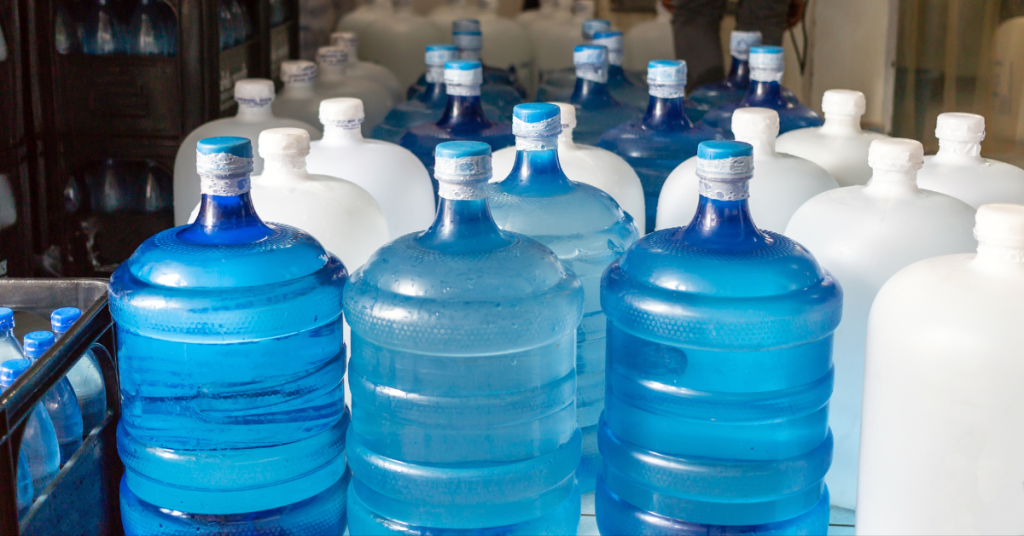
The recent flooding in Kentucky underscores the critical importance of proactive emergency preparedness. To safeguard your family and property, develop a comprehensive emergency plan that includes evacuation routes and communication strategies. Assemble a disaster supply kit with essentials such as non-perishable food, water, medical supplies, and tools. Enhance your home’s resilience by implementing flood defense measures like installing waterproof barriers and elevating utilities. Stay informed through local alerts and foster a culture of readiness by regularly reviewing and practicing your emergency plans. Prioritizing safety and resilience today can significantly mitigate the impact of future natural disasters.
Our hearts go out to the residents of Kentucky who have been profoundly affected by the recent severe flooding. The loss of at least 11 lives and the displacement of countless families are tragedies that resonate deeply with us. In these challenging times, it’s crucial to come together as a community to support those in need. If you’re looking to assist, consider donating to reputable organizations involved in relief efforts or volunteering your time to help with recovery initiatives. Collectively, we can make a meaningful difference and aid Kentucky in rebuilding and healing.

